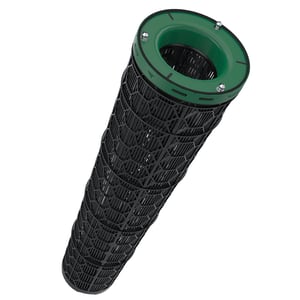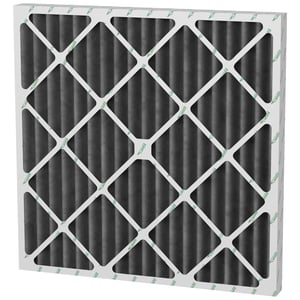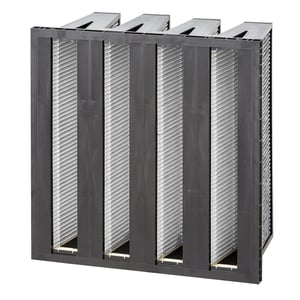A Standard Breath of Air
Molecular filtration
Protecting indoor air from harmful gases and odours takes more than just particle filters. It often requires molecular, or gas-phase, filtration designed to capture airborne contaminants like VOCs, ozone, and corrosive gases that regular filters can’t handle. But how can you be sure a molecular filter performs as promised? We explain what to look for and which dedicated standards you should always keep in mind to ensure proper air quality protection.
Standards are essential to effective molecular filtration. They provide a reliable framework for selecting filters that remove harmful gases like VOCs, ozone, nitrogen dioxide and sulphur dioxide. By following recognised standards and industry recommendations such as ISO 10121, EN16798-3 and Eurovent 4/26, you ensure more than regulatory compliance. You improve indoor air quality, safeguard people and enable efficient, long-term filtration performance.
In Europe, a series of air filtration standards and guidelines, including ISO 10121 and Eurovent 4/26, provide a framework for selecting the right molecular filters. These standards help facility managers, specifiers, and building owners navigate the complexities of gas-phase contaminants and ensure cleaner, safer, and more efficient indoor environments.
Molecular filters are designed to remove gaseous contaminants that particle filters can’t capture, including:
Ozone (O₃): A reactive gas that can harm respiratory health and sensitive electronics.
VOCs (Volatile Organic Compounds): Can be emissions from industrial processes and vehicles. Indoor VOC can be emitted by paints, adhesives, cleaning agents, and building materials, can cause odours, headaches, and long-term health effects.
Sulphur Dioxide (SO₂): Commonly released from combustion processes and industrial emissions. Can cause respiratory irritation, corrosion of materials, and contribute to poor indoor air quality.
Nitrogen Dioxide (NO₂): Emitted from combustion sources like traffic and heating systems. Even at low concentrations, it can cause respiratory issues, worsen asthma, and degrade indoor air quality. In 2021, the WHO cut its recommended exposure limits in half, highlighting just how harmful NO₂ can be, even at levels once considered acceptable.
For the first time, the EN 16798-3 standard acknowledges the health risks these gases pose at much lower concentrations than previously known. The updated EN 16798 standard emphasis on protecting people, from harmful molecular exhaust gases.
Listen to Tobias Zimmer as he provides a detailed technical breakdown of the EN 16798-3 standard, explaining its requirements and guiding you on selecting the right filters to ensure optimal air quality and compliance in your building. Gain valuable insights into key performance factors and practical applications to make informed decisions for your ventilation system.
A small selection of our different solutions




Molecular filters must be tested to ensure they actually remove the harmful gases as they are meant to remove, such as VOCs, ozone, NO₂ and SO₂. Testing according to ISO 10121 verifies real-world performance, helping you select the right filter for your application and ensuring reliable protection for people, equipment and air quality.
ISO 10121-3 provides a classification method for molecular filters in general ventilation, which serves as a foundation for selecting the appropriate filter in accordance with EN 16798-3.
Fire safety is just as vital as air quality. Flammability standards ensure that HVAC filters, including molecular filters, meet strict safety requirements, especially in sensitive or high-risk environments.
Ensures that molecular filter media and filters meet international safety requirements, particularly for combustibility and smoke generation — critical in sensitive environments.
Camfil provides a wide portfolio of certified UL900 filters. Please reach out to your local Camfil office or representative to learn more.
Different spaces have different air quality needs. From maintaining good indoor air quality (IAQ) to air pollution management and cleanroom standards, the right guidelines ensure safety, efficiency, and compliance. Explore key air filtration standards and how they apply to your environment.